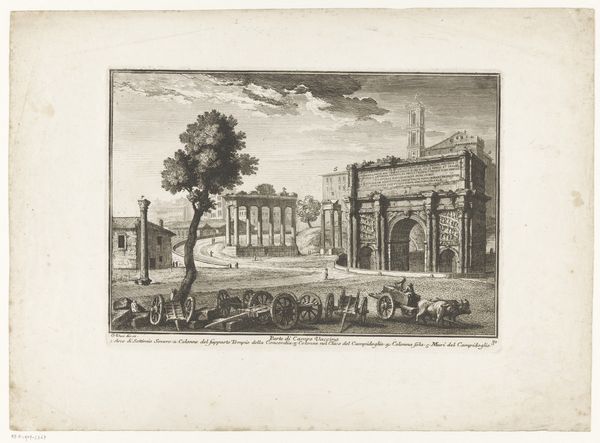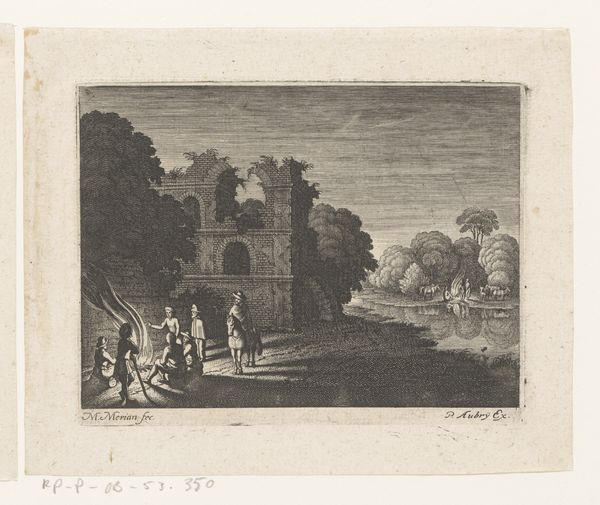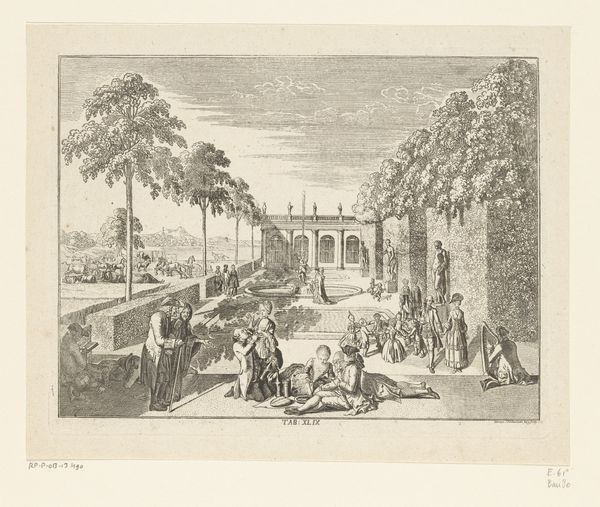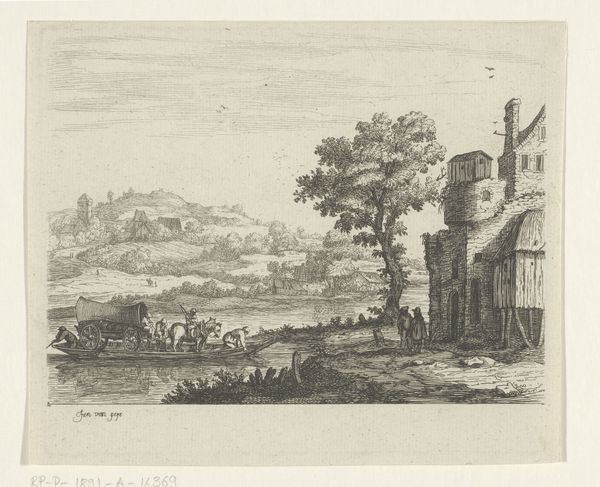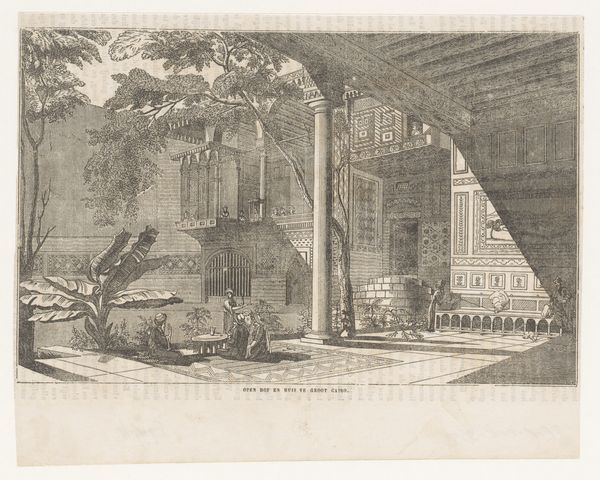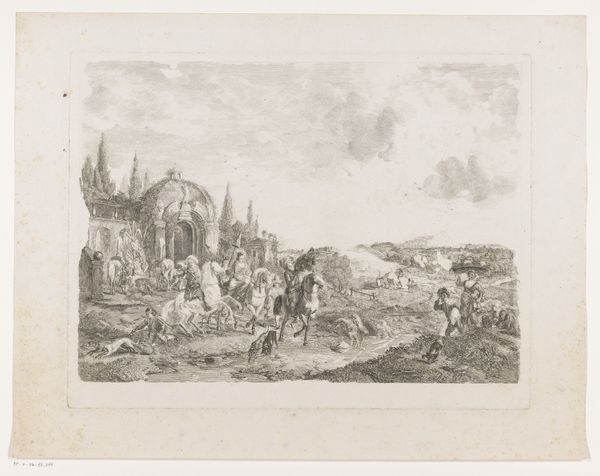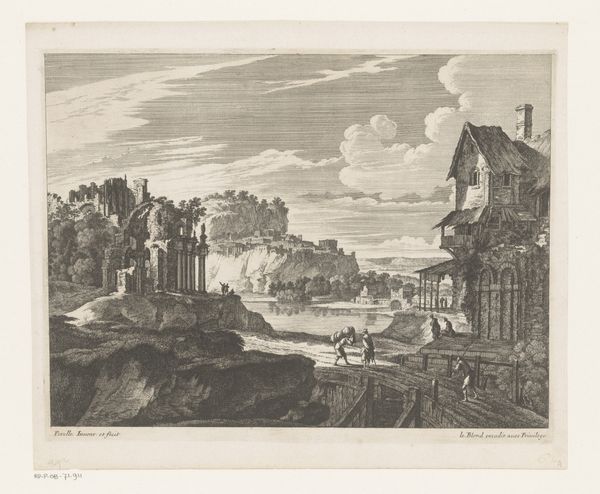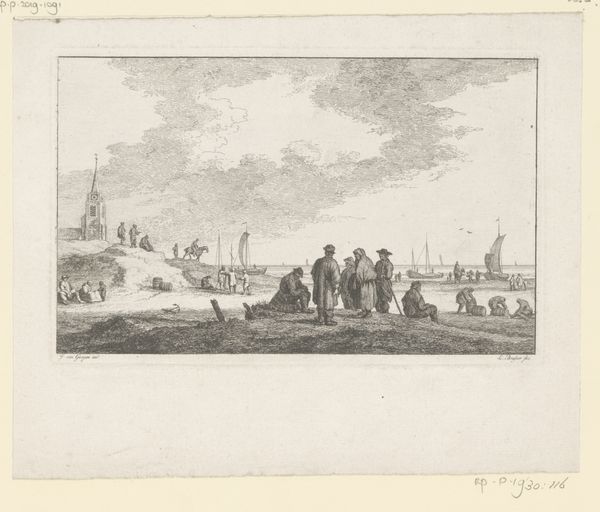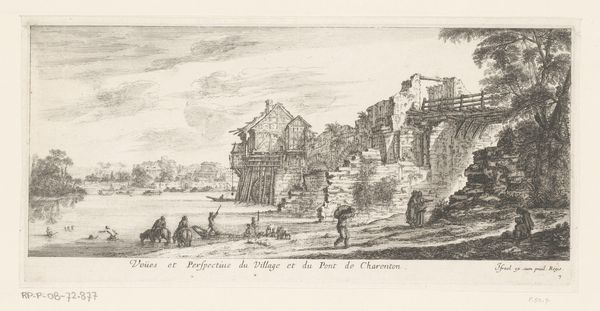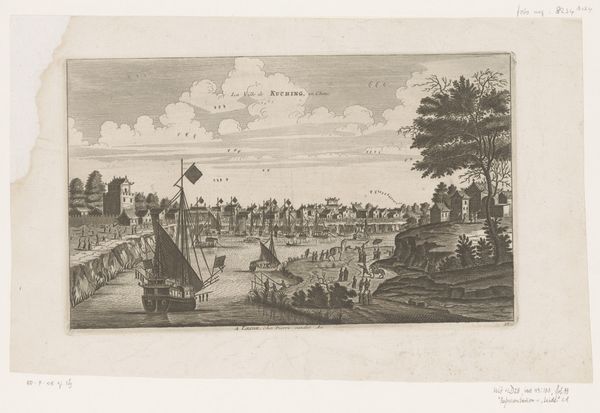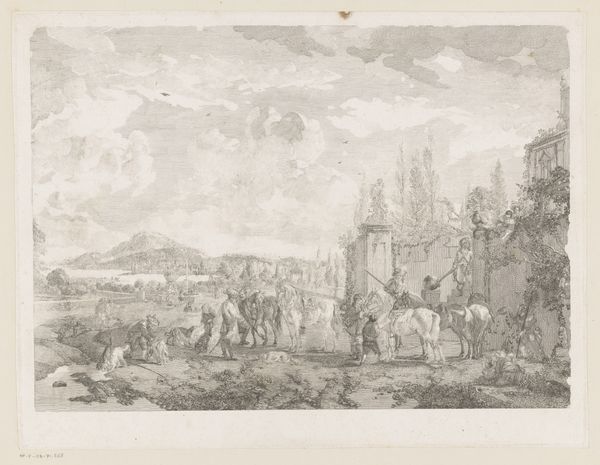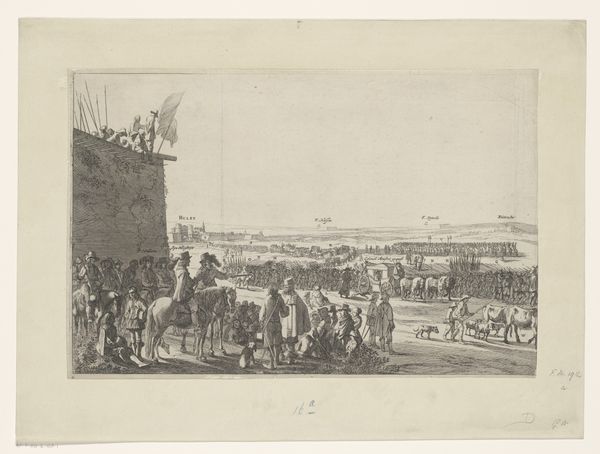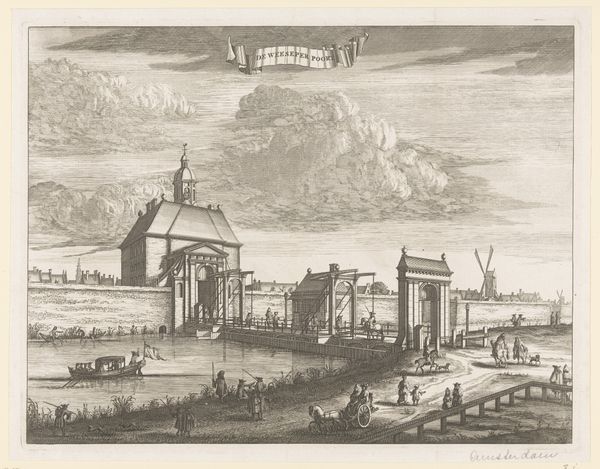
Dimensions: height 362 mm, width 475 mm
Copyright: Rijks Museum: Open Domain
Editor: This is "Elegant ruitergezelschap bij stadspoort" by Jean Pelletier, made sometime between 1746 and 1780. It's an engraving, and there's so much detail packed into this relatively small print. What's your take on how the composition is working here? Curator: Considering the interplay between Baroque dynamism and nascent Neoclassical order is essential. Observe how the artist has carefully structured the image. There's a distinct horizontal division, the city extending towards the horizon and figures dominating the midground. Do you see how this tension between depth and proximity affects your perception? Editor: I think so, yes. The detail pulls you in, but then your eye gets kind of lost in the landscape in the background. Is that what you mean? Curator: Precisely. And what about the rhythmic distribution of dark and light areas? Note the density around the city gate juxtaposed against the ethereal treatment of the distant sky. These variations create a palpable sense of depth, shaping spatial relations that guide the viewer’s eye. This work employs compositional elements from various contemporary styles and merges them, an accomplishment, would you not say? Editor: I see that. So it's more than just the scene, it's how the artist used dark and light to lead your eye through it all. I hadn’t noticed that so acutely until you pointed it out. Curator: The formal properties articulate a system that conveys cultural nuances. It's less about replicating the subject of figures at a city gate and more about utilizing those visual elements in relationship to others. And these all reflect on each other to create a powerful perspective. Editor: I learned so much just by thinking about the visual language in this piece! It definitely changed how I’ll approach engravings moving forward.
Comments
No comments
Be the first to comment and join the conversation on the ultimate creative platform.
